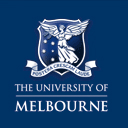Full description
The Melbourne Femur Collection is a unique archive of human femoral bone tissue gathered from persons who died suddenly and unexpectedly without any major predisposing medical conditions or long periods of immobilisation. The collection also includes a large amount of image data derived from the bones and de-identified information describing the individual tissue donors. The images include post-mortem clinical CT scans, micro-CT image data, and digitised microradiographs of thin sections of the bones. The material was collected during the 1990’s and the early part of this century and the donors resided in the State of Victoria, Australia. The material was collected with ethical oversight conforming to the standards of the National Health and Medical Research Council in Australia and latterly also with the informed consent of the next-of-kin. Around 600 individuals are represented in the physical collection and another 300 are described by clinical CT scans. Both sexes are represented and the age range is almost completely descriptive of the entire human lifespan. The initial justification for the collection was for age-at-death determinations in a forensic context but as those responsible have collected more and more material they have come to realise that huge variations in patterns of bone tissue ageing can be discovered amongst persons of the same chronological age. This limits the utility of the archive as a forensic anthropological reference. However, the serendipitous nature of science has meant that the greatest potential value for the collection is being realised by studies of age-related bone loss (which may lead to osteoporotic fracture of the hip) and the biomechanics and micro-structure of bone.
Date Submitted : 30 06 2016
Spatial Coverage And Location
iso31662: AU-VIC
User Contributed Tags
Login to tag this record with meaningful keywords to make it easier to discover


